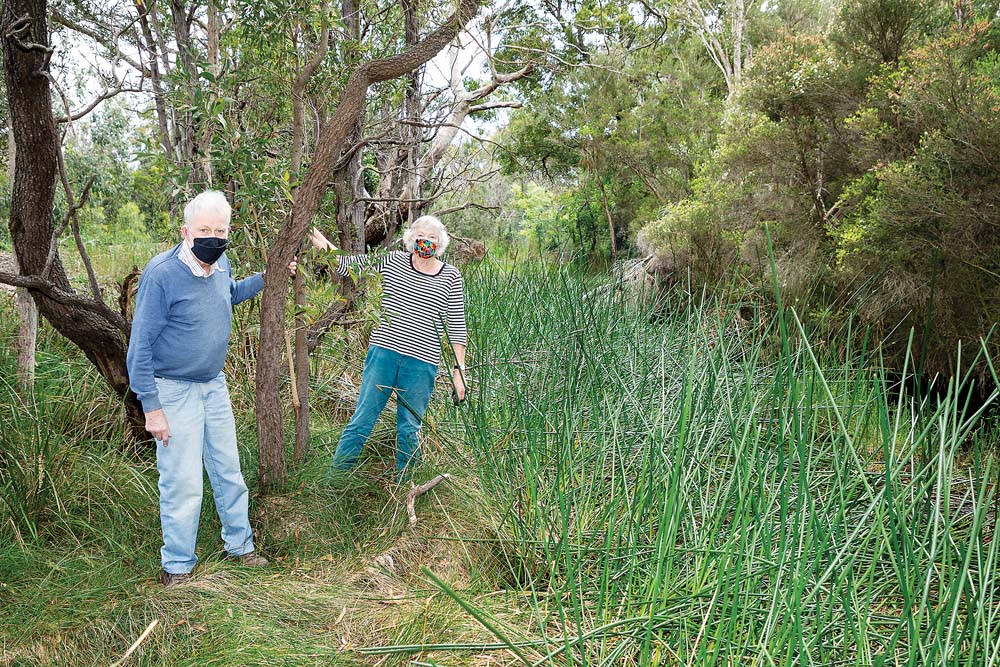
A STROLL along the Old Mornington railway line from Wooralla Drive convinced Mount Eliza couple Ann and John Scholes that any proposed bike path should be subject to an environmental effects statement to protect indigenous flora and fauna along the route.
Ms Scholes was referring to plans by Mornington Community Safelink Group and Mornington Railway Preservation Society to complete the Peninsula Bay Trail’s missing links from Moorooduc to Mornington, (“Groups align for shared path” The News 27/7/20).
She said an EES would be a “simple reflection on the beauty and extent of the endangered habitats and indigenous plant species and what we can do to ensure that the path is routed in the best interests of all concerned”.
“While we are not botanists, we know that this corridor contains many endangered, unique, and irreplaceable habitats, including rich and threatened biodiversity,” she said.
“Now, as an imperative, it is time for the community to absorb and live with the joys of this natural environment and ensure that this link with the past is retained for the future of our children and grandchildren.”
The shire’s team leader traffic and transport Tom Haines-Sutherland said a flora and fauna assessment for a shared user path between Mornington and Moorooduc, predominantly along the railway corridor, had been done.
“Additional work has been undertaken to update the shire’s data on the location of high value biodiversity along the rail corridor, as part of planning work currently under way to determine the best alignment for this path,” he said.
“Due to legislative changes and the range of alternative routes being considered, a new flora and fauna assessment is likely to be required once route options have been further refined.”
Ms Scholes said the biodiverse bushland “enriches our increasingly urban lives and helps rebuild our relationships with the natural world”.
“It is time for all who love the natural environment to walk this corridor and absorb its natural beauty.”
Ms Scholes said that, framed by the escarpment backdrop the trees along the corridor “create a sense of open space and perspective not readily accessible to older, locked down residents of urban Mount Eliza”.
“At a cursory glance, black and blackwood wattles, swamp and snow gums, and black sheoaks are among the profusion of indigenous trees and shrubs.”
The detritus of human life was everywhere, including bicycle and vehicle ruts, ballast, and uneven surfaces. Despite this, she said: “We were astounded by the indigenous vegetation, such as clumps of grass trees (Xanthorrhoea minor), an enormous array of lily species, swathes of kangaroo grass and soft spear grass. Healthy wetlands teeming with wildlife are immediately evident.”
Mr and Ms Scholes, who have lived at Mount Eliza for the past 44 years, said an environmental effects statement was “fundamental to the planning of this path”.
Mornington Community SafeLink Group’s Graeme Rock said the shire was preparing several alternative path options which would be released for public comment. Once the preferred path was confirmed the shire will conduct an environmental impact study as it is required to enact an environmental offset plan if any native vegetation is disturbed by the construction of a path.
“The SafeLink Group has always recognised the value of the native vegetation along the rail corridor as an asset for the community,” Mr Rock said.
“If the community pathway is constructed through the rail corridor our vision is for this section of the pathway to become an education trail with signage describing the significant biodiversity within the rail corridor.
“By working with the Mornington Rail Society a shared vision has emerged to create an environmental corridor from Baxter to The Briars [Mount Martha].
“If the community pathway does go through the rail corridor it may be unique for Melbourne, as most trails are devoid of native vegetation. The Mornington Community SafeLink Group wants this trail to be a rewarding experience for the community – not just another pathway.”



